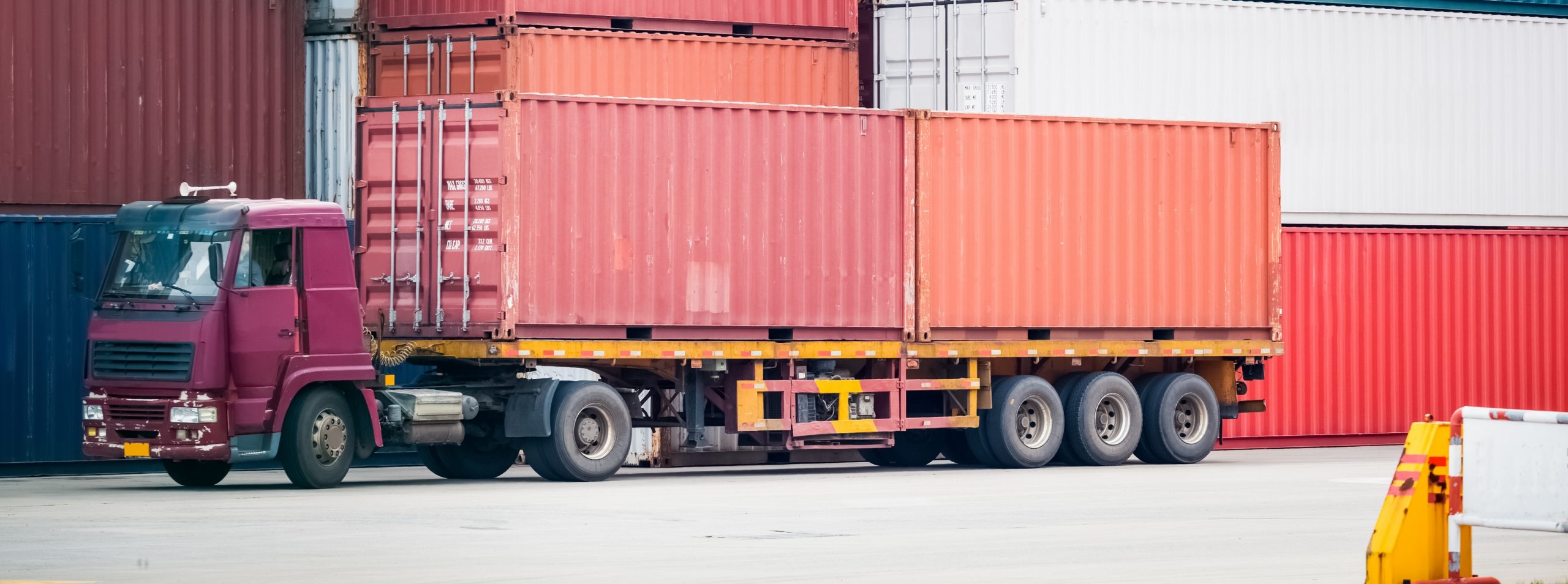
Agreement on Subsidies and Countervailing Measures (“SCM Agreement”)
The Agreement on Subsidies and Countervailing Measures (“SCM Agreement”) addresses two separate but closely related topics: multilateral disciplines regulating the provision of subsidies, and the use of countervailing measures to offset injury caused by subsidized imports.
Multilateral disciplines are the rules regarding whether or not a subsidy may be provided by a Member. They are enforced through invocation of the WTO dispute settlement mechanism. Countervailing duties are a unilateral instrument, which may be applied by a Member after an investigation by that Member and a determination that the criteria set forth in the SCM Agreement are satisfied.
Structure of the Agreement
Part I provides that the SCM Agreement applies only to subsidies that are specifically provided to an enterprise or industry or group of enterprises or industries, and defines both the term “subsidy” and the concept of “specificity.” Parts II and III divide all specific subsidies into one of two categories: prohibited and actionable, and establish certain rules and procedures with respect to each category. Part V establishes the substantive and procedural requirements that must be fulfilled before a Member may apply a countervailing measure against subsidized imports. Parts VI and VII establish the institutional structure and notification/surveillance modalities for implementation of the SCM Agreement. Part VIII contains special and differential treatment rules for various categories of developing country Members. Part IX contains transition rules for developed country and former centrally-planned economy Members. Parts X and XI contain dispute settlement and final provisions.
Coverage of the Agreement
Part I of the Agreement defines the coverage of the Agreement. Specifically, it establishes a definition of the term “subsidy” and an explanation of the concept of “specificity”. Only a measure which is a “specific subsidy” within the meaning of Part I is subject to multilateral disciplines and can be subject to countervailing measures.
Definition of subsidy Unlike the Tokyo Round Subsidies Code, the WTO SCM Agreement contains a definition of the term “subsidy”. The definition contains three basic elements: (i) a financial contribution (ii) by a government or any public body within the territory of a Member (iii) which confers a benefit. All three of these elements must be satisfied in order for a subsidy to exist.
The concept of “financial contribution” was included in the SCM Agreement only after a protracted negotiation. Some Members argued that there could be no subsidy unless there was a charge on the public account. Other Members considered that forms of government intervention that did not involve an expense to the government nevertheless distorted competition and should thus be considered to be subsidies. The SCM Agreement basically adopted the former approach. The Agreement requires a financial contribution and contains a list of the types of measures that represent a financial contribution, e.g., grants, loans, equity infusions, loan guarantees, fiscal incentives, the provision of goods or services, the purchase of goods.
In order for a financial contribution to be a subsidy, it must be made by or at the direction of a government or any public body within the territory of a Member. Thus, the SCM Agreement applies not only to measures of national governments, but also to measures of sub-national governments and of such public bodies as state-owned companies.
A financial contribution by a government is not a subsidy unless it confers a “benefit.” In many cases, as in the case of a cash grant, the existence of a benefit and its valuation will be clear. In some cases, however, the issue of benefit will be more complex. For example, when does a loan, an equity infusion or the purchase by a government of a good confer a benefit? Although the SCM Agreement does not provide complete guidance on these issues, the Appellate Body has ruled (Canada – Aircraft) that the existence of a benefit is to be determined by comparison with the market-place (i.e., on the basis of what the recipient could have received in the market). In the context of countervailing duties, Article 14 of the SCM Agreement provides some guidance with respect to determining whether certain types of measures confer a benefit. In the context of multilateral disciplines, however, the issue of the meaning of “benefit” is not fully resolved.
Specificity. Assuming that a measure is a subsidy within the meaning of the SCM Agreement, it nevertheless is not subject to the SCM Agreement unless it has been specifically provided to an enterprise or industry or group of enterprises or industries. The basic principle is that a subsidy that distorts the allocation of resources within an economy should be subject to discipline. Where a subsidy is widely available within an economy, such a distortion in the allocation of resources is presumed not to occur. Thus, only “specific” subsidies are subject to the SCM Agreement disciplines. There are four types of “specificity” within the meaning of the SCM Agreement:
- Enterprise-specificity. A government targets a particular company or companies for subsidization;
- Industry-specificity. A government targets a particular sector or sectors for subsidization.
- Regional specificity. A government targets producers in specified parts of its territory for subsidization.
- Prohibited subsidies. A government targets export goods or goods using domestic inputs for subsidization.
Categories of Subsidies
The SCM Agreement creates two basic categories of subsidies: those that are prohibited, those that are actionable (i.e., subject to challenge in the WTO or to countervailing measures). All specific subsidies fall into one of these categories.
Prohibited subsidies Two categories of subsidies are prohibited by Article 3 of the SCM Agreement. The first category consists of subsidies contingent, in law or in fact, whether wholly or as one of several conditions, on export performance (“export subsidies”). A detailed list of export subsidies is annexed to the SCM Agreement. The second category consists of subsidies contingent, whether solely or as one of several other conditions, upon the use of domestic over imported goods (“local content subsidies”). These two categories of subsidies are prohibited because they are designed to directly affect trade and thus are most likely to have adverse effects on the interests of other Members.
The scope of these prohibitions is relatively narrow. Developed countries had already accepted the prohibition on export subsidies under the Tokyo Round SCM Agreement, and local content subsidies of the type prohibited by the SCM Agreement were already inconsistent with Article III of the GATT 1947. What is most significant about the new Agreement in this area is the extension of the obligations to developing country Members subject to specified transition rules (see section below on special and differential treatment), as well as the creation in Article 4 of the SCM Agreement of a rapid (three-month) dispute settlement mechanism for complaints regarding prohibited subsidies.
Actionable subsidies Most subsidies, such as production subsidies, fall in the “actionable” category. Actionable subsidies are not prohibited. However, they are subject to challenge, either through multilateral dispute settlement or through countervailing action, in the event that they cause adverse effects to the interests of another Member. There are three types of adverse effects. First, there is injury to a domestic industry caused by subsidized imports in the territory of the complaining Member. This is the sole basis for countervailing action. Second, there is serious prejudice. Serious prejudice usually arises as a result of adverse effects (e.g., export displacement) in the market of the subsidizing Member or in a third country market. Thus, unlike injury, it can serve as the basis for a complaint related to harm to a Member’s export interests. Finally, there is nullification or impairment of benefits accruing under the GATT 1994. Nullification or impairment arises most typically where the improved market access presumed to flow from a bound tariff reduction is undercut by subsidization.
The creation of a system of multilateral remedies that allows Members to challenge subsidies which give rise to adverse effects represents a major advance over the pre-WTO regime. The difficulty, however, will remain the need in most cases for a complaining Member to demonstrate the adverse trade effects arising from subsidization, a fact-intensive analysis that panels may find difficult in some cases(2).
Agricultural subsidies Article 13 of the Agreement on Agriculture establishes, during the implementation period specified in that Agreement (until 1 January 2003), special rules regarding subsidies for agricultural products. Export subsidies which are in full conformity with the Agriculture Agreement are not prohibited by the SCM Agreement, although they remain countervailable. Domestic supports which are in full conformity with the Agriculture Agreement are not actionable multilaterally, although they also may be subject to countervailing duties. Finally, domestic supports within the “green box” of the Agriculture Agreement are not actionable multilaterally nor are they subject to countervailing measures. After the implementation period, the SCM Agreement shall apply to subsidies for agricultural products subject to the provisions of the Agreement on Agriculture, as set forth in its Article 21.
Countervailing Measures
Part V of the SCM Agreement sets forth certain substantive requirements that must be fulfilled in order to impose a countervailing measure, as well as in-depth procedural requirements regarding the conduct of a countervailing investigation and the imposition and maintenance in place of countervailing measures. A failure to respect either the substantive or procedural requirements of Part V can be taken to dispute settlement and may be the basis for invalidation of the measure.
Substantive rules A Member may not impose a countervailing measure unless it determines that there are subsidized imports, injury to a domestic industry, and a causal link between the subsidized imports and the injury. As previously noted, the existence of a specific subsidy must be determined in accordance with the criteria in Part I of the Agreement. However, the criteria regarding injury and causation are found in Part V. One significant development of the new SCM Agreement in this area is the explicit authorization of cumulation of the effects of subsidized imports from more than one Member where specified criteria are fulfilled. In addition, Part V contains rules regarding the determination of the existence and amount of a benefit.
Procedural rules Part V of the SCM Agreement contains detailed rules regarding the initiation and conduct of countervailing investigations, the imposition of preliminary and final measures, the use of undertakings, and the duration of measures. A key objective of these rules is to ensure that investigations are conducted in a transparent manner, that all interested parties have a full opportunity to defend their interests, and that investigating authorities adequately explain the bases for their determinations. A few of the more important innovations in the WTO SCM Agreement are identified below:
- Standing. The Agreement defines in numeric terms the circumstances under which there is sufficient support from a domestic industry to justify initiation of an investigation.
- Preliminary investigation. The Agreement ensures the conduct of a preliminary investigation before a preliminary measure can be imposed.
- Undertakings. The Agreement places limitations on the use of undertakings to settle CVD investigations, in order to avoid Voluntary Restraint Agreements or similar measures masquerading as undertakings
- Sunset. The Agreement requires that a countervailing measure be terminated after five years unless it is determined that continuation of the measure is necessary to avoid the continuation or recurrence of subsidization and injury.
- Judicial review. The Agreement requires that Members create an independent tribunal to review the consistency of determinations of the investigating authority with domestic law.
Transition Rules and Special and Differential Treatment
Developed countries Members not otherwise eligible for special and differential treatment are allowed three years from the date on which for them the SCM Agreement enters into force to phase out prohibited subsidies. Such subsidies must be notified within 90 days of the entry into force of the WTO Agreement for the notifying Member.
Developing countries The SCM Agreement recognizes three categories of developing country Members: least-developed Members (“LDCs”), Members with a GNP per capita of less than $1000 per year which are listed in Annex VII to the SCM Agreement, and other developing countries. The lower a Member’s level of development, the more favourable the treatment it receives with respect to subsidies disciplines. Thus, for example, LDCs and Members with a GNP per capita of less than $1000 per year listed in Annex VII are exempted from the prohibition on export subsidies. Other developing country Members have an eight-year period to phase out their export subsidies (they cannot increase the level of their export subsidies during this period). With respect to import-substitution subsidies, LDCs have eight years and other developing country Members five years, to phase out such subsidies. There is also more favourable treatment with respect to actionable subsidies. For example, certain subsidies related to developing country Members’ privatization programmes are not actionable multilaterally.. With respect to countervailing measures, developing country Members’ exporters are entitled to more favourable treatment with respect to the termination of investigations where the level of subsidization or volume of imports is small.
Members in transformation to a market economy Members in transformation to a market economy are given a seven-year period to phase out prohibited subsidies. These subsidies must, however, have been notified within two years of the date of entry into force of the WTO Agreement (i.e., by 31 December 1996) in order to benefit from the special treatment. Members in transformation also receive preferential treatment with respect to actionable subsidies.
Notifications
Subsidies Article 25 of the SCM Agreement requires that Members notify all specific subsidies (at all levels of government and covering all goods sectors, including agriculture) to the SCM Committee. New and full notifications are due every three years with update notifications in intervening years. The notifications are the subject of extensive review and discussion by the SCM Committee.
Countervailing legislation and measures All Members are required to notify their countervailing duty laws and regulations to the SCM Committee pursuant to Article 32.6 of the SCM Agreement. Members are also required to notify all countervailing actions taken on a semi-annual basis, and preliminary and final countervailing actions at the time they are taken. Members also are required to notify which of their authorities are competent to initiate and conduct countervailing investigations.
Dispute Settlement
The SCM Agreement generally relies on the dispute settlement rules of the DSU. However the Agreement contains extensive special or additional dispute settlement rules and procedures providing, inter alia, for expedited procedures, particularly in the case of prohibited subsidy allegations. It also provides special mechanisms for the gathering of information necessary to assess the existence of serious prejudice in actionable subsidy cases.
More related articles...


רפורמת היבוא – מהם יתרונות הרפורמה למגזר העסקי?
רפורמת “מה שטוב לאירופה טוב לישראל” מציעה מספר יתרונות משמעותיים למגזר העסקי בישראל. הנה כמה מהיתרונות המרכזיים: 1. הפחתת עלויות ייבוא הרפורמה מפחיתה את העלויות


רפורמת היבוא – איך רפורמת היבוא תשפיע על המחירים?
רפורמת היבוא שאושרה תחת הכותרת “מה שטוב לאירופה טוב לישראל” צפויה להשפיע בצורה משמעותית על המחירים בישראל. הנה כמה מהדרכים המרכזיות בהן הרפורמה תשפיע על


יסודות שחרור ממכס בשילוח בינלאומי
שחרור ממכס הוא שלב מכריע בתהליך השילוח הבינלאומי. זה כרוך בהגשה ועיבוד של מסמכים ומידע שונים כדי לעמוד בתקנות ובדרישות של מדינת היעד. ללא שחרור


למה צריך סקר שוק מקיף לפני יבוא סחורות מחו”ל
בנוף העצום של הסחר הבינלאומי, אמנות יבוא הסחורות מחו”ל דומה לניווט במבוך של הזדמנויות ואתגרים. דמיינו את זה – אתם על סף גילוי אוצר של


מגמות יבוא, ייצוא וסחר בינלאומי
ליבוא, לייצוא ולמסחר הבינלאומי יש היסטוריה עשירה שראשיתה מאות שנים. מדרך המשי העתיקה ועד לרשתות האספקה העולמיות המודרניות, העולם חווה התפתחות יוצאת דופן באופן שבו


ייצוא יבוא בינלאומי: מדריך מקיף
לפני שצוללים לתוך עולם היבוא והיצוא הבינלאומיים, חשוב שתהיה הבנה מוצקה של היסודות. סחר בינלאומי כרוך בחילופי סחורות ושירותים בין מדינות, המאפשר לעסקים להרחיב את























